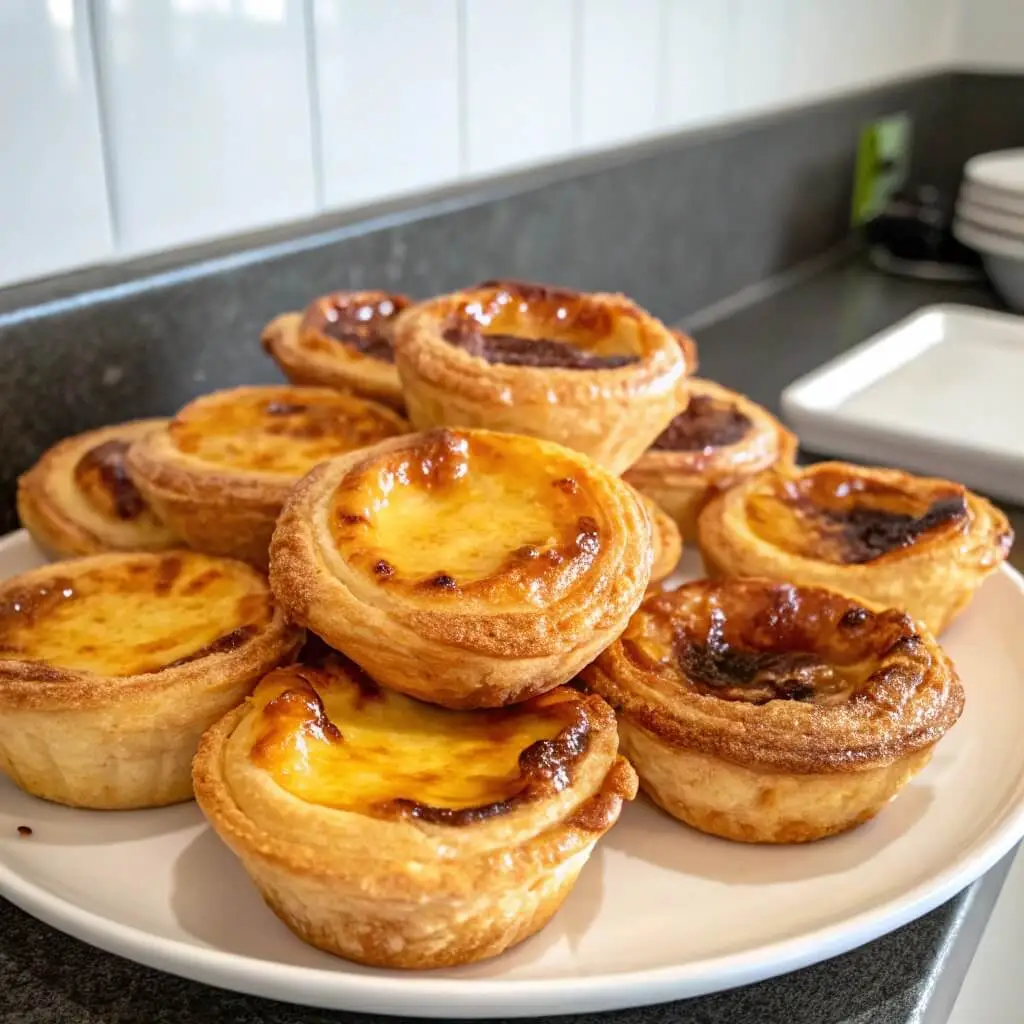Pastries are among the most beloved and versatile culinary creations in the world. From flaky croissants served with morning coffee to elaborate tarts adorned with seasonal fruits, pastries occupy a prominent place in both everyday cuisine and fine patisserie. Their appeal lies not only in their delightful textures and rich flavors but also in the cultural stories they carry. This article delves deep into the world of pastries, exploring their origins, classifications, techniques, and their place in global traditions.
The Origins of Pastry
The roots of pastry-making can be traced back thousands of years. The ancient Egyptians were among the first to experiment with a dough-like substance made from flour and water, sweetened with honey and sometimes filled with nuts or fruits. These early forms laid the groundwork for more sophisticated pastries developed later.
In ancient Greece and Rome, pastries became more refined. The Greeks introduced a form of pie using flour and water doughs, which were often filled with meat or seafood. The Romans borrowed and adapted these ideas, incorporating richer ingredients like cheese, nuts, and dates. However, the pastry as we know it today began to take shape in medieval Europe, where butter, lard, and eventually refined sugar were introduced.
Fundamentals of Pastry Making
At its core, pastry is a dough made from a combination of flour, fat, and liquid. The specific type of pastry is determined by the ratio of these ingredients and the techniques used during preparation. The fat—whether butter, lard, or shortening—is crucial for creating the desired texture, whether crumbly, flaky, or tender.
Pastry-making requires precision. Unlike bread, where some improvisation is allowed, pastry relies on exact measurements and timing. Overworking the dough can lead to toughness, while improper chilling may cause the fat to melt prematurely, compromising flakiness.
Main Types of Pastry Dough
There are several distinct types of pastry dough, each serving a specific culinary function. Here are the primary varieties:
1. Shortcrust Pastry
Shortcrust is perhaps the most basic and widely used type of pastry. It is known for its tender, crumbly texture and is typically used for pies, tarts, and quiches. It involves a simple mixture of flour, butter, a pinch of salt, and cold water. The dough is handled minimally to prevent gluten formation, which could make it tough.
2. Puff Pastry
Puff pastry is a labor-intensive dough that creates multiple flaky layers through a technique called lamination. It involves folding and rolling butter into the dough repeatedly to create hundreds of alternating layers of fat and flour. When baked, the water in the butter turns to steam, lifting the layers and giving puff pastry its signature airy texture. It’s used in everything from savory vol-au-vents to sweet palmiers.
3. Choux Pastry (Pâte à Choux)
Unlike other pastries, choux pastry is cooked on the stovetop before baking. It’s made by boiling water and butter, adding flour, and then incorporating eggs to create a thick, pipeable dough. Choux rises in the oven due to steam, creating hollow centers ideal for fillings. This dough forms the basis for éclairs, cream puffs, and profiteroles.
4. Filo (Phyllo) Pastry
Filo pastry consists of paper-thin sheets of dough brushed with butter or oil. It’s used extensively in Middle Eastern and Mediterranean cuisines, most famously in baklava and spanakopita. The layers become crisp and flaky when baked, contrasting beautifully with moist fillings.
5. Rough Puff Pastry
Rough puff is a shortcut version of puff pastry that skips the elaborate lamination process. Chunks of butter are mixed into the dough and folded a few times to create some layering. While not as lofty as true puff pastry, it delivers a similar flaky texture with less effort.
6. Sweet Pastry (Pâte Sucrée and Pâte Sablée)
Sweet pastries are enriched doughs used primarily for dessert tarts and cookies. Pâte sucrée is a sweet, firm dough that holds its shape well, ideal for tart shells. Pâte sablée is even richer and more crumbly, akin to shortbread. Both typically include eggs and sugar.
Popular Pastries Around the World
Pastries reflect local ingredients and customs, resulting in an astonishing diversity of forms and flavors globally.
France: The Epicenter of Pastry Art
France is often considered the spiritual home of pastry. From the elegant mille-feuille to the buttery croissant, French pâtisseries have influenced global baking. The macaron, with its delicate meringue shells and ganache fillings, has become a symbol of refined indulgence.
Austria and Germany: Layers of Tradition
Strudels, made with thin, stretched dough wrapped around fillings like apples or cheese, originated in the Austro-Hungarian Empire. These pastries reflect a love for fruit-based desserts and skilled rolling techniques.
Italy: A Taste of Heritage
Italian pastries often include ricotta, nuts, citrus, and honey. Cannoli, with their crisp shells and creamy filling, and sfogliatelle, with their layered shell and semolina-based filling, are among the most iconic.
Middle East: A Symphony of Sweetness
Pastries in Middle Eastern cuisine are rich with nuts, syrups, and spices. Baklava, made with layers of filo, chopped nuts, and honey or syrup, is beloved across many cultures. Maamoul, a filled cookie-like pastry, is another regional favorite.
Asia: Fusion and Flavor
While not traditionally known for Western-style pastries, many Asian countries have developed unique offerings. Japan’s matcha-flavored pastries and mochi-inspired creations have garnered global appeal. Chinese dim sum includes savory pastries like char siu bao and egg tarts.
The Americas: Diverse Influences
Latin America features pastries like empanadas, which can be savory or sweet. In the United States, pie crusts are a form of shortcrust pastry used for classics like apple or pumpkin pie. The rise of fusion baking has led to novel creations like cronut (croissant + doughnut).
Pastry in Modern Cuisine
Pastry has evolved with contemporary culinary trends. Today, bakers blend traditional techniques with modern twists—infusing global flavors, incorporating dietary preferences like gluten-free or vegan ingredients, and embracing artistic presentation.
High-end restaurants often feature pastry chefs with specialized training, crafting desserts that are as visually impressive as they are delicious. Meanwhile, home bakers have access to online tutorials and baking shows that demystify even the most complex pastry techniques.
The Science Behind Pastry
Successful pastry-making is as much science as it is art. The texture of the finished product is influenced by:
- Gluten development: Minimal gluten gives tenderness, while too much results in toughness.
- Fat distribution: The size and temperature of fat particles affect flakiness.
- Moisture control: Too much water can activate gluten; too little can cause dryness.
- Temperature: Chilling dough allows fats to stay solid, essential for flakiness.
Understanding these elements allows bakers to control outcomes and experiment confidently.
Pastries as Cultural Symbols
Beyond flavor and texture, pastries often carry symbolic meaning. In many cultures, pastries mark celebrations and festivals:
- Galette des Rois in France celebrates Epiphany.
- Koulourakia are Greek Easter pastries.
- Mooncakes in China mark the Mid-Autumn Festival.
- Hot Cross Buns in the UK are tied to Easter traditions.
These treats go beyond sustenance, acting as vehicles of tradition, memory, and community.
Challenges in Pastry Making
Despite their appeal, pastries pose several challenges for beginners:
- Precision required: Accurate measurements and timing are critical.
- Temperature sensitivity: Working with butter requires temperature control.
- Labor-intensive processes: Puff pastry and choux demand patience and skill.
However, mastering even one type of pastry dough can open doors to dozens of recipes and variations.
Conclusion
Pastries are more than just sweet or savory baked goods—they represent centuries of culinary evolution, a spectrum of techniques, and a world of flavors. Whether enjoyed with coffee in a Parisian café or handmade in a home kitchen, they offer moments of joy, nostalgia, and indulgence.
As both an art and a science, pastry-making invites experimentation and creativity. For professional chefs, it’s a refined discipline. For home bakers, it’s a rewarding challenge. In any context, pastries embody the universal human desire to transform simple ingredients into something exquisite.

